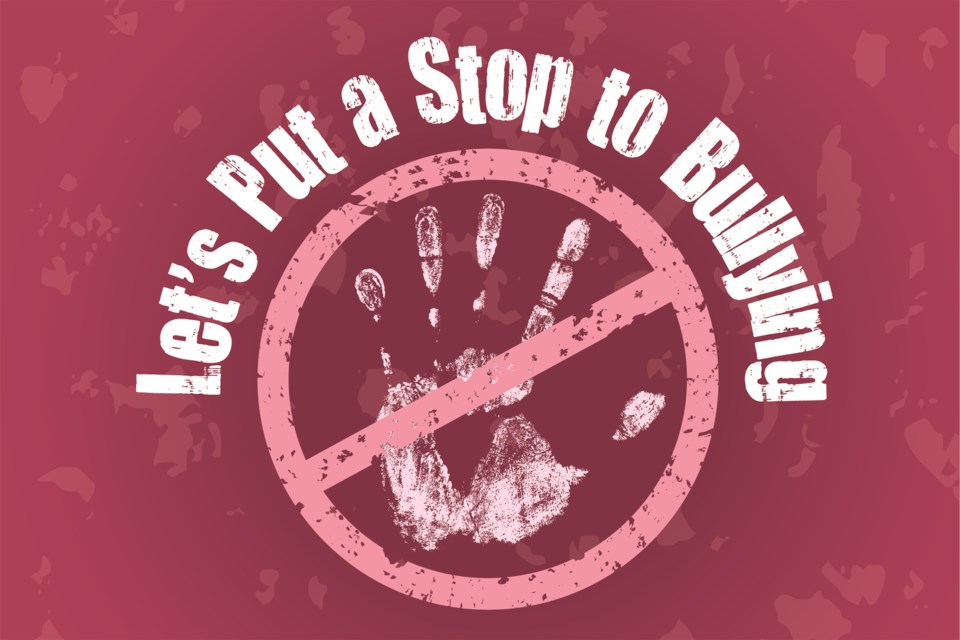LAKELAND – In 2007, two Grade 12 Nova Scotian students started a movement focused on stopping bullying. That movement sparked Pink Shirt Day and has since spread across the globe.
Pink Shirt Day, a nationally recognized day in Canada, came about after a Grade 9 student arrived to class wearing a pink polo shirt.
The student was harassed by bullies that called him homosexual for his choice in clothing and threatened to beat him up, according to students who were interviewed at the time.
In the wake of the incident, Grade 12 students David Shepherd and Travis Price encouraged their fellow classmates to wear pink and bought dozens of pink tank top shirts to hand out in a stance against bullying.
To their surprise, the message caught on and when they arrived at school the majority of their peers were dressed in pink – some from head to toe.
Shepherd and Price had dubbed the movement “sea of pink,” but what would eventually catch on was the colour of the shirt and the meaning behind the message – let's be kind to each other and put a stop to bullying.
Following this event, special days like “Stand Up Against Bullying Day” and “Anti-bullying” started to pop up all over the country. And now, the Government of Canada officially recognizes the last Wednesday of each February as Pink Shirt Day.
“Every individual has the right to a workplace free of bullying, harassment, and discrimination, so let’s all think about how we can help reduce bullying and contribute to a healthier and safer workplace,” states the Canadian government’s website.
Along with generating awareness about the impact of bullying, the day encourages everyone to build a culture of kindness at school, at home, in the workplace and in the community.
Bullying in Canada
While Canadians are often considered polite by the international community, findings by UNICEF Canada paints a slightly different story.
UNICEF’s report card on child wellbeing in wealthy countries found that Canada’s rate of bullying ranked slightly higher than the average among industrialized nations.
“The number of kids who endure bullying in Canada is higher than in many peer countries, but it doesn’t have to be,” states UNICEF, adding that bullying is a factor that unnecessarily limits kids' health and educational success.
About one in four Canadian youth reported being bullied as frequently as twice per week, and almost half of Canadian parents report having a child who has been a victim of bullying, according to a 2015 report by the Government of Canada.
While it is generally accepted that the impacts on children of bullying are often exacerbated by the use social media and smartphones, research by UNICEF has found that technology has shifted the form of bullying more than it has increased the rate of bullying.
“There is mounting evidence that points to a bigger culprit – the impact of widening income and social inequality,” says UNICEF Canada.
UNICEF research is pointing to the role that inequality plays in creating stress on children and families, and in general, the disconnect it can cause between people. The organization says inequality may have an even greater impact than the use of advancing technology.
“Countries with wide inequality tend to have more violence and difficult relationships, including bullying. It seems to work against the many good efforts underway in Canada to curb bullying through awareness, programs and policies,” states the humanitarian organization.
Every year UNICEF Canada supports bullying awareness and prevention campaigns including Pink Shirt Day. With Pink Shirt Day quickly approaching, UNICEF Canada lists three things people can do to spread kindness and prevent bullying.
-
Start a non-judgmental conversation with a child in your life. Ask them how they deal with mean acts online and in the community. Ask them how they spread kindness. Ask them if they need some help.
-
Ask your elected representatives what is next in their plans to deal with wide income inequality in Canada – such as increasing family income benefits.
-
Model kindness in your relationships with others – especially where there are power differences.
“Wear pink. But let’s also act pink,” UNICEF Canada encourages.



